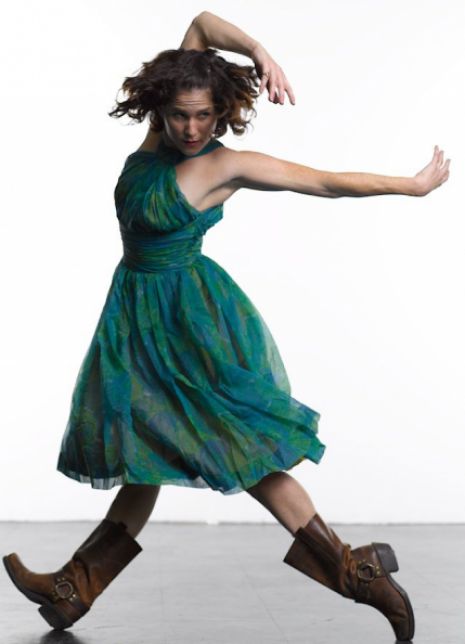Lineage
Contrary to what its etymology suggests, “lineage” is not a linear construct. The scope of artistic lineage is enormous, a web of intersecting, overlapping, and parallel pathways that are causal, reactionary, generative, and cyclical. Lineage is also tied to memory and can trigger temporal perception, nostalgia, and reinvention. For me, lineage is first and foremost about respect and gratitude.
It is important for dance makers to think critically about ownership, to understand the lineages that inform our work, and to give credit where credit is due. Ideas about artistic lineage have been part of my creative research since 2009 when I made Punk Yankees, a project that explored sampling, appropriation, originality, and the ownership of dance in the digital age. As dance is largely passed from body to body, a discussion about originality must include a discussion about lineage.
In conjunction with Punk Yankees, Lucky Plush created the website StealThisDance.com as a virtual stage for our research. The site includes videos in which we experimented with sampling, impersonation, and fusion forms. In one, we sampled just the men’s part in a Swan Lake pas de deux, in another we’ve attempted to fuse Butoh and Cheerleading.
Punk Yankees and StealThisDance.com helped me realize the extent to which I’m influenced by my teachers, mentors, and collaborators, past and present. Patricia Sigurdson, my first dance teacher and founder of Salt Creek Ballet,ingrained in me a strong work ethic and relationship to musicality and phrasing. Her training led me to the San Francisco Ballet, where I danced for a little over a year before making a shift at 20 to study history and women’s studies at Northwestern University.
Brian Jeffery was my modern dance teacher at Northwestern and the Artistic Director of XSIGHT Performance Group. After I graduated, he invited me to work with XSIGHT and was my primary dance partner for several years. We shared a kinesthetic connection that felt like home. His lush choreography - with its grounded sense of weight and momentum - is embedded in my muscle memory and continues to inform my movement invention.
It was a fortuitous twist in my lineage to work with XSIGHT, because Brian and the other three artists in the company were – and continue to be – innovators. The company included: Peter Carpenter, whose work combines physical theater, dance, critical theory, and social activism; Marianne Kim, who creates multimedia performance works, public art, and dance films; and Holly Rothschild, co-founder and choreographer of String Theory Productions, an ensemble of performers and musicians that creates sonic installations that transform sites. Holly co-founded Lucky Plush Productions with me before moving to Los Angeles, and our collaborative work generated research questions that I continue to address.
Many other artists have inspired and influenced me. Early in my career, Pina Bausch snuck up on me with dances that felt like dreams. My first exposure was a grainy VHS copy of Café Muller that brought me to tears. This was before video was readily available online, so I visited libraries and got my hands on as much of Bausch's work as I could find (other favorites are Marusca Fogo and "1980 – A piece by Pina Bausch"). The emotional vulnerability, incisive wit, and evocative visual imagery in her work has left indelible impressions. Other past and recent influences include Lloyd Newson/DV8, Jerome Bel, Forced Entertainment, The Gob Squad, Mario Pensotti, Samuel Beckett, Hal Hartley, Christopher Guest, and Buster Keaton, among others. There are elements in each of these artists’ work that I strive to deliver in my own: the use of fragmented or nonlinear narratives that accumulate in satisfying ways; the incisive critique of contemporary culture; and the inclusion of their audiences through humor, relatable content, and resonating imagery.


